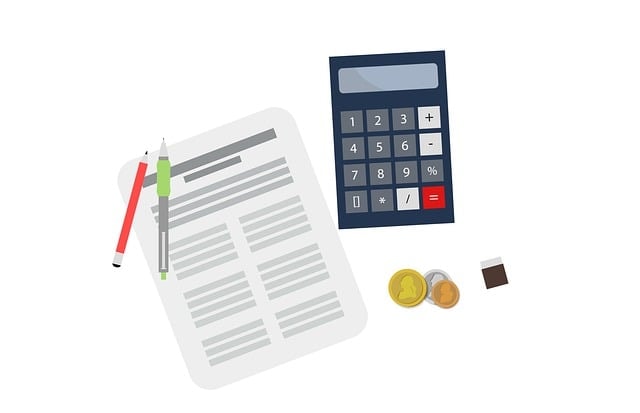Running a business means watching your money like a hawk. But most owners miss the forest for the trees – focusing on sales while expense leaks drain profits silently.
Are you tracking all your essential business expenses, including office supplies? Or are you part of the 64% of small business owners who admit they don’t have complete visibility into their spending patterns?
The difference between profitable businesses and struggling ones often comes down to how well they track, optimize, and categorize business expenses. The businesses that survive economic downturns aren’t necessarily the ones with the highest revenue – they’re the ones with the tightest grip on their spending.
The truth is stark: you can’t manage what you don’t measure. And in 2025’s economic landscape, measuring the wrong things (or measuring inconsistently) is nearly as dangerous as not measuring at all.
This guide breaks down the critical business expense categories every business owner must track, with specific attention to what’s changed in 2025. These aren’t just random suggestions – they’re the financial cornerstones that determine whether your business thrives or barely survives, especially when it comes to maximizing tax deductions.
Boost customer satisfaction with just a few clicks
Most-Loved Features:
- On-demand drivers
- Real-time GPS tracking
- Delivery confirmation photos
- Over 50% of customers report a smoother delivery experience
Essential Business Expense Categories to Track Now
Focus on key areas like office rent, salaries, and marketing.
Identify inefficiencies and improve budgeting.
Equip yourself with tools and strategies for effective expense management.
Office Expenses: Business Property, Rent, and Utilities
Office rent and utilities form the backbone of a company’s fixed expenses. This includes rent, utilities, and maintenance costs, which can heavily impact monthly budgeting. For many small businesses, cutting or optimizing these business expenses, including bank fees, can unlock resources for other critical investments. It’s not just about finding any space but finding the right one with costs that align with your business model, including lease payments.
Office Supplies and Equipment in Business Expense Categories
Office supplies and equipment typically constitute 2–5% of business expenses, while furniture and technology purchases are capitalized for depreciation
Workspace costs remain among the largest fixed expenses for small businesses. Many overlook the potential savings from negotiating better rates. Price isn’t the only factor; factors like location and amenities can also weigh heavily.
Rent and Utilities in Business Expense Categories
Rent and utilities commonly account for 10–20% of operational expenses for businesses with physical locations
Employee Training, Salaries, and Benefits
Offering competitive salaries and benefits is vital in attracting and retaining skilled employees. In 2025, quality and cost of labor are top challenges for small businesses, highlighting the need to invest in employee training and this area. Business owners must weigh the benefits carefully. It’s not just about salary, but a mix of health insurance, workers’ compensation insurance, retirement plans, and other perks.
Payroll Costs in Business Expense Categories
Employee benefits (health insurance, retirement, perks) often represent 10–20%of payroll costs.
Payroll management requires precision. Mistakes can lead to compliance issues, affecting your tax return and hurting employee morale. Efficient payroll systems and software support seamless operations. Many businesses find it challenging to decide on benefits, with 67% wishing for outside help. Solutions like consultancy and employee feedback can provide direction in crafting attractive packages.
Payroll Business Expense Category
Payroll is the largest single expense for most businesses, averaging 25–50% of total costs
Marketing and Advertising Costs
Tracking marketing and advertising expenses requires discerning between digital and traditional media. Each has its value. However, 67% of marketing leaders attribute increased sales primarily to digital campaigns. The challenge lies in tracking ROI and adjusting spend in real-time, especially for small businesses without large budgets.
Advertising and Marketing in Business Expense Categories
Advertising and marketing spend averages 7.7% of annual revenue for small businesses in the U.S.
Inventory Purchases
Balancing supply and demand, and managing inventory purchases remain pivotal. Errors in inventory tracking can lead to misaligned stock levels and financial trouble, affecting usual business expenses . This is critical for cash flow management, affecting the ability to meet customer demand promptly.
Businesses must record costs and quantities accurately. Regular stock assessments ensure the demand meets supply, reducing overstock and understock issues effectively.
Business Travel Expenses
Travel expenses encompass airfare, lodging, and meals, which quickly add up for frequent travelers. Utilizing travel management software curbs these costs. Strategies for cutting back include comparing rates, using travel rewards, and employing company-wide travel policies for more consistent expense control.
Cost structures can be unpredictable, making software tools vital in tracking and managing these expenses.
Travel and Entertainment in Business Expense Categories
Travel and entertainment expenses spiked again in 2025, especially as in-person client meetings and events returned post-pandemic
How Tracking Business Expenses Changed in 2025
Business expense tracking shifted to AI-powered automation and real-time monitoring.
Sustainable practices and remote work reshaped expense categories and priorities.
Digital integration across business systems became the standard for financial management.
Shift to Digital Solutions To Track Business Expenses
The landscape of business expense tracking underwent significant transformation in 2025. Companies moved away from manual spreadsheets and toward comprehensive digital platforms that automatically categorize, verify, and report expenses. This shift wasn’t merely about convenience—it addressed fundamental business challenges like compliance, accuracy, and time management.
Financial professionals now rely on automated systems that capture receipts, extract data, and categorize expenses with minimal human intervention. These systems reduce errors that previously plagued manual entry methods while simultaneously cutting processing time by up to 70%. For small businesses, this meant redirecting valuable human resources away from administrative tasks and toward growth-oriented activities, including reviewing bank statements.
Advanced expense tracking software now integrates directly with accounting systems, banking platforms, and tax preparation tools. This integration creates a continuous data flow that eliminates duplicate entries and reconciliation headaches. Business owners can view real-time financial positions rather than waiting for month-end reports. When tax season arrives, categorized expenses are already organized according to IRS requirements, simplifying deduction claims and reducing audit risks.
AI-Powered For Categorize Expense Improvements
Artificial intelligence now handles the complex task of expense categorization with remarkable accuracy. Modern systems can distinguish between similar expenses based on context, vendor information, and historical patterns. For example, a meal expense at a restaurant during business hours with a client is automatically classified differently than a weekend meal at the same location.
“Automated solutions like Expense Tracker 365 offer greater efficiency, accuracy, and policy enforcement—saving both time and money. Investing in the right tools today will lead to better financial health, improved compliance, and increased employee productivity in the years to come.”
This intelligence extends to policy enforcement, with systems that flag potential violations before expenses are approved.
Rise of Sustainable Practices
Environmental considerations became central to expense tracking in 2025. Businesses now routinely track “green expenses” as separate categories to monitor their environmental impact alongside financial costs, including federal excise taxes. This categorization helps companies measure progress toward sustainability goals while identifying areas for improvement in their tax-deductible business practices.
New business expense categories emerged specifically for tracking carbon offsets, renewable energy investments, and eco-friendly supply chain expenditures. These business expense categories serve dual purposes: they help businesses meet increasing regulatory requirements around environmental reporting while also providing data to support marketing claims about sustainability efforts and necessary business licenses. Companies that implemented comprehensive tracking of sustainable expenses gained advantages in both regulatory compliance and market positioning.
The cost structure of business operations evolved to include sustainability metrics alongside traditional financial ones. When evaluating vendors, businesses now consider total environmental impact alongside price points. Business expense tracking systems adapted to include fields for carbon footprint data, recycled content percentages, and energy efficiency ratings. This holistic approach to expense categorization provides a more complete picture of operational costs—both financial and environmental.
Measurable Benefits of Green Expense Tracking
Businesses that implemented detailed tracking of sustainability expenses discovered unexpected benefits. Beyond marketing advantages, many found that sustainable choices often reduced costs over time. Office energy efficiency improvements, for example, typically showed payback periods of 2-3 years with ongoing savings thereafter. Tracking these expenses separately allowed for clearer ROI calculations on green investments and other costs related to sustainability.
Companies also began categorizing expenses related to sustainability certifications as strategic investments rather than operational costs. This recategorization reflected the changing perception of environmental initiatives from compliance burdens to competitive advantages. Expense tracking systems now accommodate multi-dimensional analyses that show both immediate costs and long-term benefits of sustainable business practices.
Impact of Remote Work Trends
The permanent shift toward hybrid and remote work arrangements fundamentally altered expense categories and priorities. Traditional office expense categories like building leases, utilities, and maintenance saw significant reductions, while new categories emerged for remote work stipends, home office equipment, and collaborative technology platforms.
Companies established new expense policies that addressed the blurred lines between personal and professional costs in remote work settings. Rather than maintaining traditional expense categories, forward-thinking organizations created flexible stipend systems that allowed employees to customize their work-related purchases within defined spending limits. This approach reduced administrative overhead while improving employee satisfaction.
Technology expenses grew as a percentage of overall business costs, with cybersecurity investments becoming particularly significant. Remote work environments introduced new security vulnerabilities that required robust protection. Expense tracking systems evolved to monitor these specialized technology investments, enabling businesses to balance security needs against budget constraints.
Employee Technology Allowances
The concept of technology allowances replaced traditional equipment expenses in many organizations. Rather than purchasing standard equipment for all employees, companies implemented allowance systems that permitted workers to select tools that best suited their specific needs and preferences. This approach required expense tracking systems capable of managing individual allowances while maintaining appropriate approval workflows.
“As companies adjust to changing workplace dynamics and economic conditions, expense management systems have become integral to financial visibility and control. Modern solutions use artificial intelligence, predictive analytics, and cloud technology to help companies monitor and process spending.”
The most sophisticated expense tracking systems now analyze patterns in remote work expenditures to identify cost-saving opportunities without compromising productivity. For example, they might identify when multiple employees purchase similar software subscriptions that could be replaced with an enterprise license at a lower per-user cost.
Evolution of Tax Compliance Approaches
Tax compliance requirements continued to evolve in 2025, with increasing complexity for businesses operating across multiple jurisdictions. Modern expense tracking systems now incorporate tax rule engines that automatically apply the correct tax treatments based on expense type, location, and business purpose.
For IRS compliance specifically, the optimal approach to categorizing business expenses aligns with Schedule C (for sole proprietors) or relevant business tax forms. Modern tracking systems automatically map business expenses to these categories: advertising, car expenses, commissions, contract labor, depreciation, insurance, legal services, office expenses, rent, repairs, supplies, taxes, travel, meals, utilities, and wages. This automatic categorization significantly reduces tax preparation time and compliance risks.
Organizations with complex tax situations, such as those operating internationally or in multiple states, benefit from systems that track location data for each expense. This granular tracking enables accurate allocation of expenses to the appropriate tax jurisdictions, reducing the risk of compliance failures during audits.
Virtual Card Integration for Better Categorization
Virtual payment cards emerged as powerful tools for automatic business expense categorization. These digital payment methods can be configured with specific expense categories, including vehicle expenses spending limits, and expiration dates. When employees use designated virtual cards for specific purposes (like marketing subscriptions or client entertainment), the expenses are automatically categorized without additional steps.
This integration between payment methods and expense tracking represents a significant advance in accuracy and efficiency. Rather than categorizing expenses after they occur, the process begins at the point of purchase. The result is near-perfect categorization with minimal human intervention, addressing one of the most persistent challenges in expense management.
Benchmarking and Analytics Capabilities
Expense tracking in 2025 evolved beyond simple record-keeping to include sophisticated analytics capabilities. Business owners now use these tools to benchmark their spending against industry standards, identify outliers, and predict future expense patterns. This analytical approach transforms expense tracking from a compliance necessity into a strategic planning tool.
The question of what percentage of business expenses should be reimbursed has renewed attention with these advanced analytics. Rather than applying one-size-fits-all rules (like the traditional “30% for overhead” guideline), businesses now analyze expense-to-revenue ratios by department, project, and revenue stream. This granular approach provides more actionable insights than broad percentage targets, including how they affect taxable income.
For small businesses, expense analytics offer particular value in identifying seasonal patterns and projecting cash flow needs. When combined with revenue forecasting, these tools help owners make informed decisions about expansion timing, staffing levels, and the cost of goods sold. The resulting financial stability contributes directly to business longevity and growth potential.
Expense-to-Revenue Optimization
Modern expense tracking systems now include optimization tools that suggest adjustments to improve financial performance. These recommendations might include consolidating vendors to increase purchasing power, shifting timing of major expenses to align with cash flow patterns, or reallocating resources from underperforming initiatives to more promising ones.
The standard for business expense percentages varies significantly by industry. Retail businesses typically operate with expenses at 70-80% of revenue, while service businesses might target 50-60%. Manufacturing companies often have expenses around 65-75% of revenue. Modern expense tracking systems incorporate these industry benchmarks into their analytics, providing context-specific guidance rather than generic recommendations.
Business owners who implemented these advanced analytics capabilities reported making more confident financial decisions and experiencing fewer cash flow surprises. The visibility into expense patterns created by modern tracking systems transformed financial management from reactive to proactive, contributing to overall business stability and growth.
Predictions for Managing Business Finances Effectively in the Coming Year

Business expense management is changing rapidly with AI, dynamic budgeting, and employee wellness becoming financial priorities.
Cybersecurity costs now represent a significant expense category that cannot be overlooked.
Understanding and implementing the right expense tracking tools is critical for financial success in 2025
Adopting AI for Cost Management
AI is reshaping how businesses track, predict, and manage expenses. In 2025, we’re seeing companies shift from basic automation to true predictive expense management. According to recent data, the average monthly spend on AI reached $62,964 in 2024 and is projected to rise to $85,521 in 2025—a 36% increase. This investment trend reveals that businesses are betting on AI’s ability to deliver significant cost savings that outweigh the implementation costs, particularly in dealings with financial institutions.
AI systems now analyze historical spending patterns across all expense categories to predict future costs with remarkable accuracy. These systems can identify potential cost overruns before they happen and suggest corrective actions. For example, if an AI system notices that travel expenses typically spike in March, it can prompt finance teams to adjust budgets accordingly or recommend alternative meeting strategies to control costs.
Integration Methods for AI Tools
Integrating AI into existing financial systems requires careful planning. Most businesses are taking one of three approaches:
Starting with standalone AI tools that connect to existing accounting software
Upgrading to financial platforms with built-in AI capabilities
Building custom AI solutions tailored to specific expense management needs
The second option is gaining popularity as it offers the path of least resistance. Modern expense management platforms now come with AI features like receipt scanning, automatic categorization, and fraud detection as standard features. However, according to industry data, only 51% of companies feel confident in calculating the ROI of their AI initiatives, highlighting a major challenge in cost visibility and attribution.
Measuring AI’s Financial Impact
The potential ROI from AI adoption varies widely based on business size and complexity. AI implementation costs can range from $10,000 for small automation projects to over $10 million for enterprise-scale AI. Despite these costs, businesses are seeing returns in three key areas:
Reduced manual processing time (often 60-80% reduction)
Decreased error rates in expense reporting and categorization
Better negotiation leverage with vendors through spending pattern insights
Growing Need for Dynamic Budgeting
Static annual budgets are becoming obsolete in 2025’s fast-changing business environment. The shift toward dynamic budgeting—where financial plans are continuously updated—is gaining momentum as businesses face unpredictable market conditions, supply chain disruptions, and changing customer preferences.
Dynamic budgeting allows businesses to adjust their financial plans in real-time based on actual performance data rather than waiting for quarterly or annual reviews. This approach is particularly valuable for managing the largest expense categories like employee salaries, marketing costs, and technology investments, which together often represent 60-70% of a typical business’s total expenses.
Implementing Rolling Forecasts
Rolling forecasts extend beyond traditional budgeting by continuously projecting financial performance 12-18 months into the future. As each month or quarter passes, the forecast rolls forward, maintaining the same time horizon. This provides several advantages:
Greater agility in responding to market changes
More accurate cash flow projections
Better alignment between financial resources and business opportunities
The implementation process typically involves:
Selecting key performance indicators to track and forecast
Establishing regular review cycles (typically monthly)
Developing streamlined data collection processes
Creating standardized reporting templates
Building scenario planning capabilities to test different assumptions
Real-time Budget Adjustment Strategies
Effective dynamic budgeting requires systems and processes that support quick adjustments. Key strategies include:
Setting expense thresholds that trigger automatic reviews
Creating contingency funds for unexpected expenses
Establishing clear approval protocols for budget adjustments
Using variance analysis to identify trends requiring budget changes
Implementing rolling expense forecasts by category
Financial management software with real-time dashboard capabilities has become essential for this approach. These tools provide immediate visibility into spending patterns and automatically flag potential budget issues before they become problems.
Focus on Employee Wellbeing
Employee wellbeing has evolved from a “nice-to-have” perk to a strategic financial investment. In 2025, businesses are recognizing that mental health programs, work-life balance initiatives, and wellness benefits directly impact their bottom line through improved productivity, reduced turnover, and lower healthcare costs.
The largest business expense for most companies remains employee wages, compensation, and benefits, typically accounting for 40-60% of total operating expenses. Within this category, healthcare costs continue to rise at 5-7% annually, making wellness programs that can reduce these costs particularly valuable.
Mental Health Program Investments
Mental health programs are becoming a standard expense category in progressive companies’ budgets. These investments typically include:
Employee assistance programs (EAPs) with mental health counseling
Subscriptions to digital mental health platforms
Training for managers on recognizing and addressing mental health issues
Mental health days as part of regular paid time off
Stress management and resilience training
The costs of these programs vary widely, from $10-50 per employee per month for digital solutions to more comprehensive programs costing $200-500 per employee annually. However, the ROI can be substantial—companies with effective mental health programs report 30-40% reductions in absenteeism and presenteeism (working while unwell), which can cost businesses thousands per employee annually.
Creating Balanced Work Environments
The physical and cultural work environment significantly impacts employee wellbeing and represents a meaningful expense category. In 2025, businesses are allocating funds to:
Office redesigns that support both collaborative and focused work
Ergonomic furniture and equipment for both office and remote workers
Technology that reduces stress and facilitates efficient communication
Flexible scheduling tools and policies
Quiet spaces and wellness rooms within office environments
These investments typically range from $1,000-5,000 per employee but can generate returns through increased productivity, creativity, and employee retention. With the average cost of replacing an employee ranging from 50-200% of their annual salary, retention-focused wellness investments often pay for themselves within the first year.
Emphasizing Cybersecurity
Cybersecurity has become one of the fastest-growing expense categories for businesses of all sizes. With the average cost of a data breach reaching $4.45 million in 2023 and continuing to rise, cybersecurity is no longer optional—it’s a critical financial management consideration for all financial accounts.
In 2025, businesses face an expanding threat landscape that includes:
Increasingly sophisticated ransomware attacks
AI-powered social engineering attempts
Supply chain vulnerabilities
Cloud security challenges
IoT device exploits
These threats directly impact financial management through both preventative costs and potential losses from successful attacks.
Essential Cybersecurity Practices
Effective cybersecurity requires consistent investment across several key areas:
Regular security assessments and penetration testing
Employee security awareness training
Multi-factor authentication implementation
Endpoint protection solutions
Backup and disaster recovery systems
Security monitoring and incident response capabilities
For small businesses, basic cybersecurity costs typically start at $5,000-15,000 annually, while mid-sized companies often spend $50,000-150,000. Enterprise organizations may allocate millions to their cybersecurity budgets.
Balancing Security Costs and Risks
The challenge for financial decision-makers is determining the appropriate level of cybersecurity investment. Under-investing creates vulnerability to attacks that could cause financial devastation, while over-investing diverts resources from other business needs.
A risk-based approach helps strike this balance:
Identify and inventory critical data assets
Assess potential financial impact of different types of breaches
Implement controls proportional to the potential loss
Focus on high-ROI security measures first
Consider cyber insurance as a risk transfer mechanism
As one cybersecurity expert notes: “Rigorous assessment and validation of AI risk management practices and controls will become nonnegotiable. Even if the specifics of AI assessment and validation are not mandated, stakeholders will demand it — just as they demand confidence in other decision-critical information or cybersecurity or privacy practices.”
What Is a Business Expense Tracker?
An expense tracker is a tool or system that helps businesses monitor, categorize, analyze, and report on their spending. In 2025, expense trackers have evolved from simple recording systems to sophisticated financial management platforms that provide real-time insights and proactive recommendations.
The core functions of modern expense trackers include:
Capturing expense data from multiple sources (credit cards, invoices, receipts)
Automatically categorizing expenses according to predefined rules
Generating reports by category, department, project, or period
Integrating with accounting systems for seamless financial management
Providing analytics to identify spending patterns and saving opportunities
For businesses asking “what is the biggest expense in a business?”, expense trackers provide clear visibility into major cost categories, which typically include employee compensation, office space, and marketing for most organizations.
Types of Business Expense Tracker Solutions
Businesses can choose from several types of business expense tracking solutions based on their needs:
Basic expense apps: Simple tools for capturing receipts and tracking basic business expense categories, suitable for sole proprietors and very small businesses.
Comprehensive expense management platforms: Full-featured systems with approval workflows, policy enforcement, and integration capabilities, ideal for growing businesses with multiple employees.
Enterprise financial management systems: Sophisticated platforms that handle business expense tracking as part of broader financial management, appropriate for larger organizations with complex needs.
Industry-specific expense solutions: Specialized tools designed for particular industries with unique expense tracking requirements, such as construction, healthcare, or professional services.
Selecting the Right Business Expense Tracker
Choosing an effective expense tracker requires evaluating several key factors:
Integration capabilities with existing financial systems
Mobile accessibility for on-the-go expense capture
Automation features for reducing manual data entry
Reporting flexibility to meet different stakeholder needs
Scalability to grow with the business
Security features to protect financial data
User interface simplicity for broad adoption
The right expense tracking solution will vary based on business size, industry, and complexity. Small businesses might start with a solution costing $10-30 per user monthly, while mid-sized companies typically invest $30-75 per user. Enterprise organizations often implement custom solutions with costs ranging from $75-200 per user.
For businesses concerned about their largest expenses, an effective expense tracker should provide clear visibility into major spending categories, allowing management to identify opportunities for optimization and cost reduction in areas that most impact the bottom line by establishing clear business expense categories.
Small Business Expense Categorization

Tracking business expenses isn’t just about staying organized—it’s about making informed decisions that drive growth. In 2025, the business expense categories we’ve explored remain critical for financial health, from office space costs to professional fees. As digital solutions and AI tools become standard, smart business owners are finding new ways to monitor spending with greater precision.
The shift toward remote work has changed which expenses matter most, with technology and employee wellbeing taking center stage. Meanwhile, sustainable practices aren’t just good for the planet—they’re becoming essential for the bottom line.
Remember that business expense tracking is both an art and a science. You can start by focusing on the business expense categories that impact your business most directly, then expand your tracking as you grow. It is best to use digital tools to automate where possible, but you shouldn’t lose the human touch in analyzing what the numbers tell you.
By consistently monitoring these business expense categories, you’ll spot opportunities to cut costs, identify trends, and prepare for future challenges. Your financial clarity today creates the foundation for tomorrow’s success.














